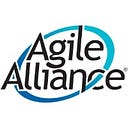Tips for Better Remote Meetings
by Esther Derby
As of this week, many people who are accustomed to going to the office are working from home.
I myself am mostly staying at home, avoiding face-to-face interaction with colleagues and friends, especially those over 65 or with medical issues.
That means more remote meetings, remote working sessions, and remote social catch ups. (My book club will be meeting via Zoom on Sunday.)
What can we do to make the best of remote meetings? I advocate having a lightweight structure for all meetings-but in remote meetings structure is even more important.
I’ve found these simple changes dramatically improve remote meetings.
- Send the purpose and agenda ahead of time, and resend just prior to the meeting. Purpose explains the why of the session, and the agenda explains the steps to get there. Underlying the agenda there needs to be a process to help the group think and decide together. Review the purpose and agenda at the beginning of the meeting. For each agenda item, explain the process when you get to that point. Explaining the process for the entire meeting at the start can be too much detail for people to retain.
- At the start of the meeting, introduce the tool you are using-how to mute, and unmute, and other relevant actions. Offer some guidelines for how to interact. For example, in meetings over four or five people, I ask people to mute unless they are speaking.
- Consider adding a brief check-in at the start of the meeting. Many people are-understandably-worried and stressed. A check in makes space for people to share what’s going on for them, and helps them set it aside for the moment. This might also be the time to foreshadow that there may be kids wandering into the background.
- Indicate when you finish an agenda item and move on to another. Check to make sure everyone is ready to move on. If you are on video, you can ask for an affirmative sign. If some are on audio, ask “who has more to contribute on this?” (The question “Is everyone ready to move on?” is unreliable.)
- Use structured questions and activities where you can. If you plan to do any activities (as in a retrospective) choose those that can be done individually, unless you have video with breakout room capabilities, or a tool that allows everyone to take part (Miro, for example).
- Send any URLs you’ll be referencing during the meeting (e.g., a google doc) with the agenda. If you plan to refer to data, send it ahead of time, even when you will be using screen share during the meeting. Absorbing data in real time, when you can’t control the scroll is at best difficult, often impossible.
If you have tips and resources, please post them in the comments below and I’ll share them in a future post.
Be well. Take care of yourself and those around you. With accurate information and cooperation, we’ll get through this.
This is an Agile Alliance community blog post. Opinions represented are personal and belong solely to the author. They do not represent opinion or policy of Agile Alliance.
Originally published at https://www.agilealliance.org on March 19, 2020.
